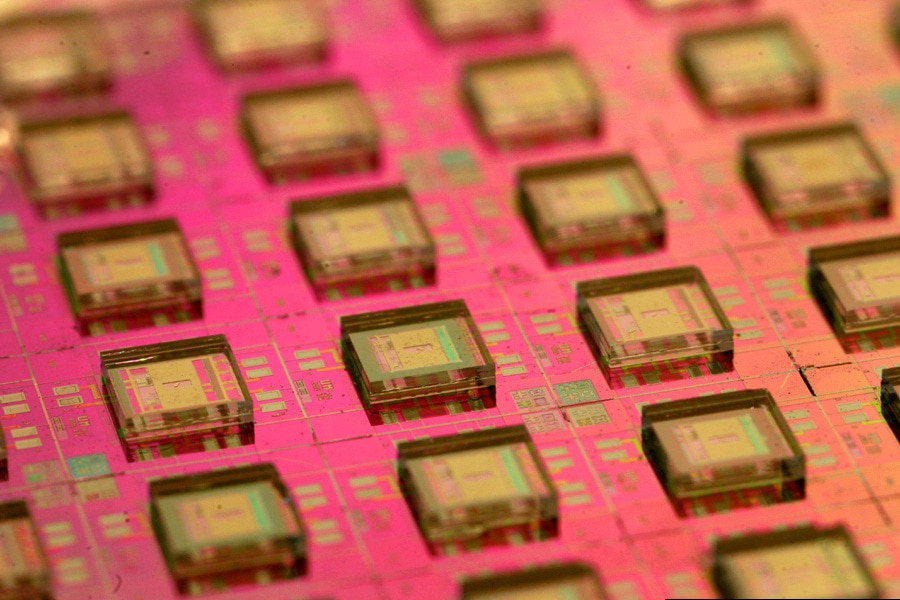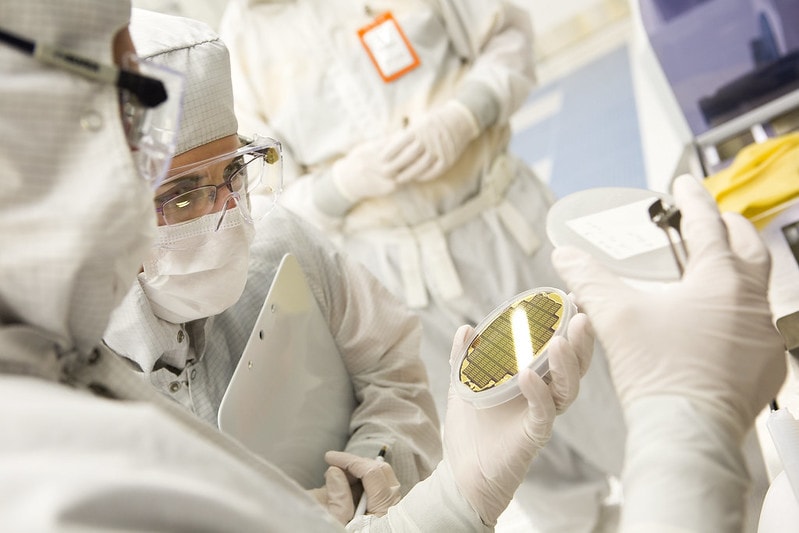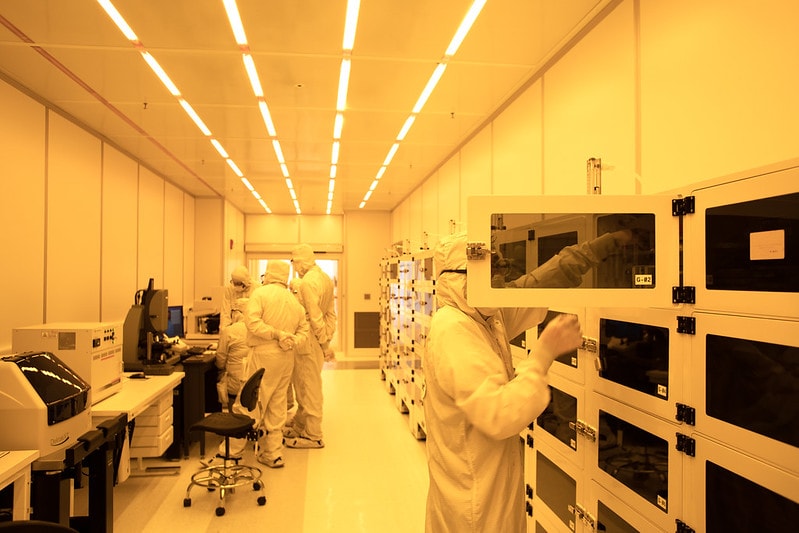
U-Michigan a partner in two CHIPS Act Midwest microelectronics hubs
The latest DoD funding announcements bolster Michigan Engineering’s efforts to support revitalization of the U.S. semiconductor sector.

The latest DoD funding announcements bolster Michigan Engineering’s efforts to support revitalization of the U.S. semiconductor sector.
As part of $238 million in new funding from the CHIPS and Science Act, the University of Michigan is a founding member of two of the eight Microelectronics Commons regional innovation hubs announced recently by the U.S. Department of Defense.
The Microelectronics Commons program establishes a network of technology hubs designed to accelerate domestic hardware prototyping and “lab-to-fab” commercialization of semiconductor technologies, as well as develop the U.S.-based semiconductor workforce. Ultimately, its goal is to reduce the country’s reliance on foreign microelectronics and safeguard the nation from supply chain risks, according to the program’s website.

U-M will play key roles in:
“We at the University of Michigan look forward to playing a lead role in advancing the semiconductor and microelectronics innovation coming out of the Midwest,” said Valeria Bertacco, the Mary Lou Dorf Collegiate Professor of Computer Science and Engineering at U-M and leader of the Michigan Advanced Vision for Education and Research in Integrated Circuits, or MAVERIC collaborative.
“The Midwest region has a deep bench of talent in semiconductor research and education, a growing semiconductor industry ecosystem and a strong manufacturing base. U-M is committed to applying its expertise and infrastructure to fostering a secure, resilient and innovative domestic semiconductor sector.”

Microelectronics Commons hubs are funded for five years. Each will work in one or more of the areas identified as critical to the DoD mission: secure edge/internet of things (IoT) computing, 5G/6G, artificial intelligence hardware, quantum technology, electromagnetic warfare and commercial leap ahead technologies, according to the DoD. More information about the projects within the hubs will be released at the Microelectronics Commons Annual Meeting in October.
These hubs represent only the latest developments at U-M in support of revitalizing the domestic semiconductor sector. Other efforts include:

“U-M has deep expertise and premier research facilities spanning the semiconductor technology stack—from materials and device fabrication to circuit design and AI hardware solutions. We’re well prepared to apply these resources to advancing US microelectronics technology and talent,” said Becky Peterson, associate professor of electrical engineering and computer science and director of U-M’s Lurie Nanofabrication Facility (LNF).
U-M is among the largest U.S. institutions educating students in microelectronics and computing. Today more than 5,800 students are enrolled in its microelectronics-related undergraduate, master’s and Ph.D. programs. More than 40 influential microelectronics startups have spun out of the university in recent decades, advancing areas such as automated semiconductor manufacturing, ultra-low power IoT devices and next-generation memory that offers unprecedented density and power improvements. In addition, over 95 local companies have utilized the LNF over the past five years.
Nicole Casal Moore
Communications & Public Engagement Director